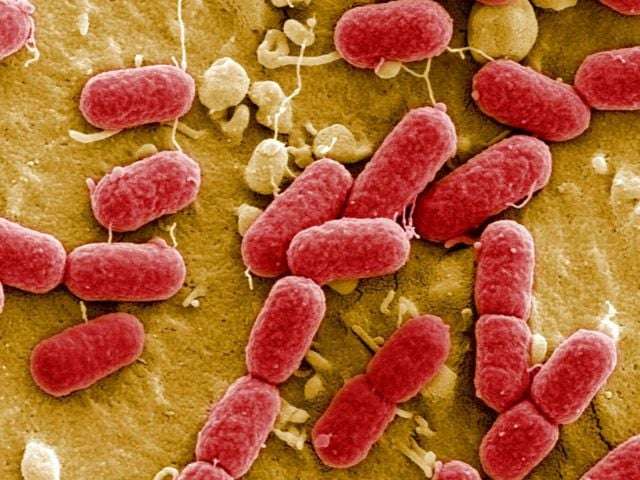Leading scientists and Nobel laureates have raised alarm over the potential dangers of synthetic “mirror life” microbes. These engineered organisms, designed from mirror-image molecules, could pose an unprecedented risk to all life forms on Earth, they warn. A group of 38 international experts, including renowned evolutionary and synthetic biologists, has called for a global halt to research on these organisms, which may bypass immune defenses in humans, animals, and plants.
What Are Mirror Life Microbes?
Mirror life refers to organisms made from mirror-image versions of naturally occurring biological molecules. In nature, biological molecules such as DNA and proteins exist as “right-handed” and “left-handed” versions. For instance, natural DNA consists of right-handed nucleotides, and proteins are made of left-handed amino acids. Mirror microbes would be created using these reversed molecules.
In simple terms, mirror life microbes would essentially be “reversed” versions of the organisms we know today. These synthetic organisms, while still in the early stages of research, could be designed to interact differently with natural systems, potentially evading biological processes such as immune responses.
Why Are Scientists Concerned About Mirror Life?
The concern with mirror life microbes stems from their ability to evade immune defenses. The natural immune system, evolved to recognize common biological markers in bacteria and viruses, might not be able to identify mirror organisms. This could make them more dangerous, as they could spread uncontrollably, cause infections, and resist antibiotics. The ability to bypass existing defenses poses a serious risk to humans, animals, and plant life.
Key Concerns About Mirror Microbes:
- Inability to Detect by Immune Systems: Mirror bacteria could potentially evade detection by both human and animal immune systems. This means that infections could go unnoticed until they spread uncontrollably.
- Uncontrollable Spread: Since mirror bacteria would be able to bypass natural predators, including other microbes that are part of the ecosystem, they could multiply without the usual environmental checks that keep harmful bacteria in balance.
- Resistance to Antibiotics: Mirror microbes may resist current antibiotics, making them difficult or impossible to treat using existing medical treatments.
- Lack of Natural Competitors: Mirror bacteria may not face competition from naturally occurring organisms, which would allow them to thrive in environments without regulation.
Call for a Global Moratorium on Mirror Life Research
In response to these concerns, the group of experts—including prominent scientists such as Dr. Craig Venter, Prof. Greg Winter, and Prof. Jack Szostak—has issued a call to halt research into the creation of mirror life until more research is done on the risks involved.
“We are dealing with an unprecedented threat,” said Professor Vaughn Cooper of the University of Pittsburgh. “Mirror bacteria could cause unchecked and potentially fatal infections that spread in an uncontrolled manner.”
Despite the alarming potential risks, the development of mirror microbes is still in its early stages. Scientists have not yet been able to create an entire organism from mirror molecules, but they have made strides in manufacturing individual mirror molecules. These molecules have shown potential in medical applications, such as drug development and chronic disease treatments.
However, these promising applications do not outweigh the potential dangers that these organisms could pose to life on Earth. As the experts stated in their 299-page report, mirror organisms should not be created until “compelling evidence” shows they would not pose extraordinary dangers.
The Potential Benefits of Mirror Life
While the risks associated with mirror life organisms are significant, there are also potential benefits that have motivated research into these microbes. For instance, mirror molecules could provide new opportunities for chronic disease treatment and contamination-resistant bioproduction systems. Mirror molecules are seen as a potential breakthrough in drug development and biotechnological applications due to their unique chemical properties.
Mirror microbes, if safely developed, could also serve as models for new types of biotechnological systems, potentially enhancing our ability to produce medicines or tackle environmental contamination. But the potential upside has not been enough to allay fears about the risks these organisms could pose to ecological and human health.
Ethical and Safety Concerns
The growing concerns about mirror life also have an ethical dimension. Dr. Kate Adamala, a synthetic biologist at the University of Minnesota, worked on creating mirror cells before abandoning the project last year after realizing the potential risks. “We should not be making mirror life,” she said. “We have time for the conversation, and that’s what this report aims to start—a global conversation about the ethics and safety of mirror organisms.”
Prof. Paul Freemont, from Imperial College London, who was not involved in the report, praised the document as an “excellent example of responsible research and innovation.” He emphasized the importance of balancing scientific promise with responsible and ethical practices, calling for stringent safety measures and guidelines.
The Future of Mirror Life Research
Research into mirror life microbes is still in its infancy, but it is progressing steadily. While it will likely take at least a decade before researchers can construct fully functional organisms from mirror molecules, the warning from experts could slow down or pause these developments. As more data is collected and the scientific community debates the risks versus rewards, the future of mirror life research remains uncertain.
The debate will likely intensify as more discoveries are made, with scientists striving to understand the full extent of what mirror life microbes could mean for humanity and the environment. As the report notes, the creation of such organisms requires caution and extensive investigation to ensure that any potential dangers are thoroughly understood before proceeding.
FAQs
1. What are mirror life microbes? Mirror life microbes are organisms created using mirror-image versions of natural biological molecules. These include DNA made from “left-handed” nucleotides and proteins built from “right-handed” amino acids.
2. Why are scientists concerned about mirror life organisms? Scientists are concerned that mirror life organisms could evade immune systems, spread uncontrollably, and resist antibiotics, posing an unprecedented threat to life on Earth.
3. What are the potential benefits of mirror life research? Mirror life research holds potential for new therapies for chronic diseases and contamination-resistant bioproduction systems, which could have significant benefits in medicine and biotechnology.
4. Are mirror life microbes currently in use? No, mirror life microbes are still in the early stages of research and have not yet been fully developed into functioning organisms. Researchers are focusing on understanding the risks before moving forward.
5. What is the call from the international panel of experts? The panel of experts has called for a global halt to research on mirror life microbes until more evidence is gathered to ensure that these organisms do not pose extraordinary dangers to life on Earth.
ALSO READ



